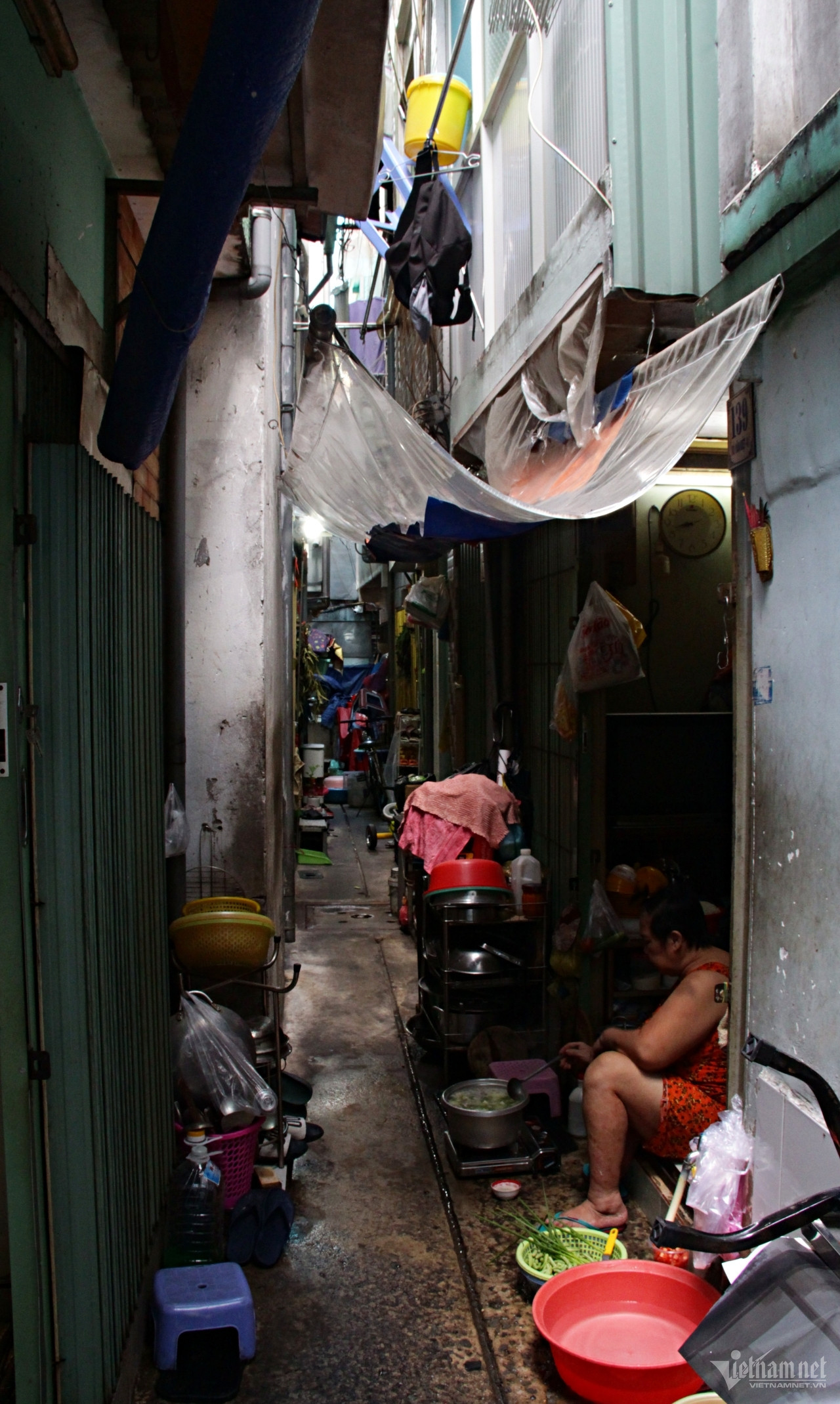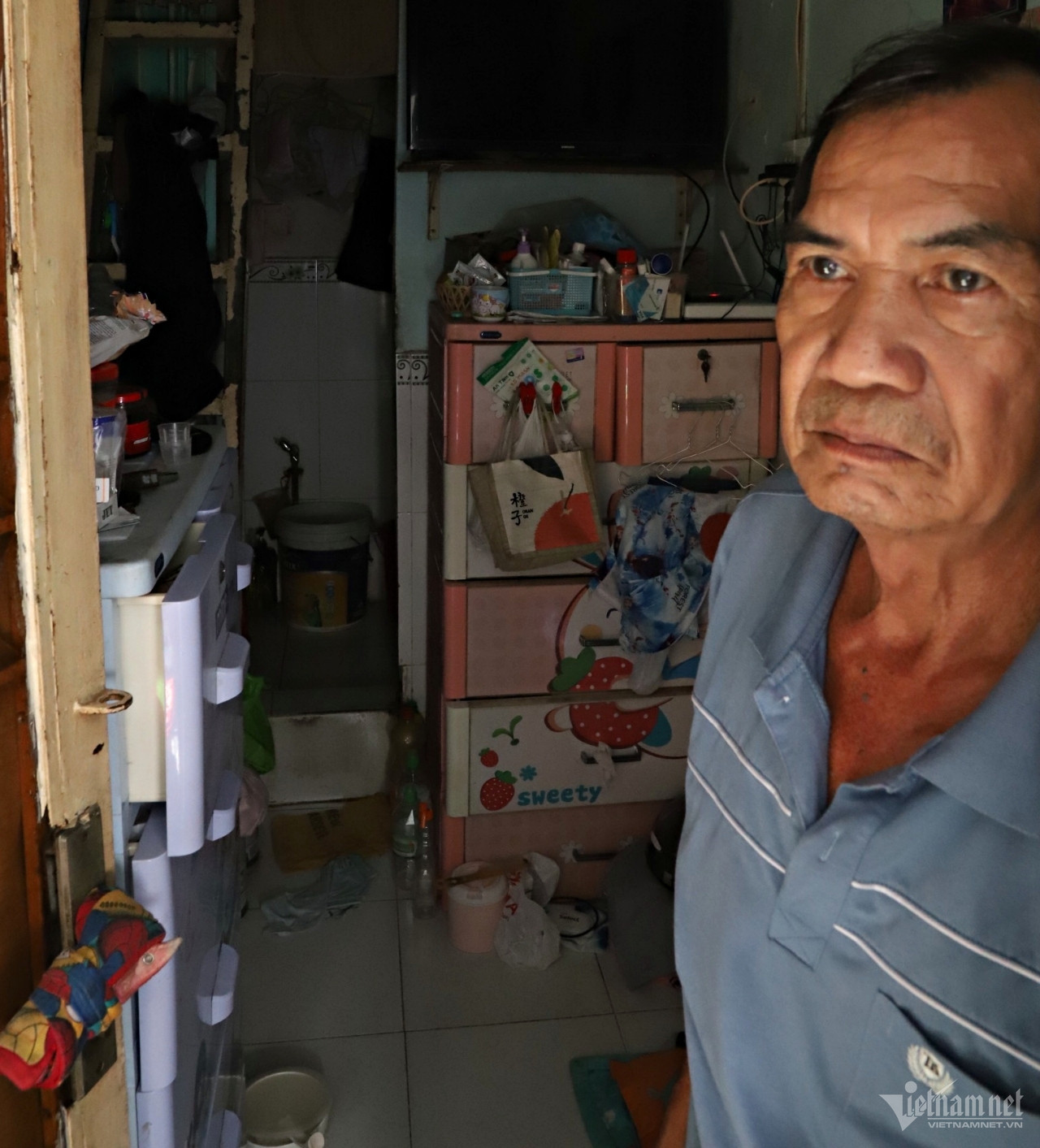
In such spaces, family members eat, sleep and use toilets in rotation.
The Cau Ong Lanh residential quarter in Cau Ong Lanh ward in district 1 is located in a very advantageous position, with four sides facing the street. But deep in the small alleys of the residential quarter, there are surprisingly small rooms with the area of 2.5-5 sq m only.
Sitting and arranging flowers in front of a tiny house, Le Kim Dung, 44, said she rarely stays at home because of the small space.
Dung and her family rented the 4 sq m room many years ago for 4-5 family members.
Dung divides the house into three parts. During daylight, people stay downstairs, while at night they sleep on the two floors above. Only one mattress can be put in each attic, and nothing else.
She earns her living by selling food on Nguyen Thai Hoc street, so she spends most of her time on street, leaving the space at home for her children and grandchild. She returns home late in the evening.
Some years ago, when conditions were bad in the area, many families had to rotate to sleep because their houses were too cramped.
“At night, some family members slept inside the houses, while others had to sleep on camp bed outdoors. All households had such beds at that time,” she recalled.
As children grow up and get married, they leave the homes and rent rooms in other places to live. This has improved the situation and the people no longer have to sleep outdoors.
In a 5 sq m house nearby, Tran Thi Le, 63, said that her family members once had to sleep in shifts.
Some years ago, she built two attics to have more space to live. However, the house is still cramped and family members cannot stretch their arms and legs.
To share the living space, some family members in the past had to get up very early in the morning for work, and stayed in the street so that other members could sleep indoors. Those who have afternoon working shifts slept inside until others left.

There are now only four people still living there, but daily activities remain unchanged. As is old and finds it difficult to move, so she stays on the first floor. The men in the family have to leave home after they get up.
Cau Ong Lanh is not alone. In district 1, tiny houses can also be found in Ma Lang area in Nguyen Cu Trinh ward and Ma Lo in Tan Dinh district.
Many houses located deep in the small alley of No 245 Nguyen Trai street are just 2-3 sq m in area. One of the houses is owned by Nguyen Phu, 63. As the house is too small, Phu and his wife have to stay at home in shifts.
Earning his living as a motorbike taxi driver, Phu stays at home when his wife is away at work. If his wife and his daughter don’t go to work, he goes out and spends the night at parks.
“It is uncomfortable at home,” he explained. “However, what I am most afraid of is the heat. It is just like a boiler.".
The house of Dinh Ngoc Quyen, 53, in the same small alley, is larger than Phu’s, but just 5 meters long and 1.3 meters wide. They have an attic to have large usable area. They sleep in the attic at night, together with dogs, while the first floor is reserved for household items and the toilet, which is large enough for only one person.
In Ma Lo area, next to Tan Dinh Market, many people live in matchboxes.
In a communal house at No 28D Ma Lo street in Tan Dinh ward, just 15 sq m, there are three households with 20 individuals of three generations living together.
The family of Tran Thi Quyt, 76, consist of six members and they all live in a 6-7 sq m room. There is also an attic, but it doesn’t help much.
Quyt uses the area in front of her house for cooking space. However, the biggest problem for the family is that they have to do the laundry and use the toilet of the next-door household.
“We don’t have money to expand the living area. But even if we did, we are not allowed to do this,” Quyt said.
Ha Nguyen - Ho Van